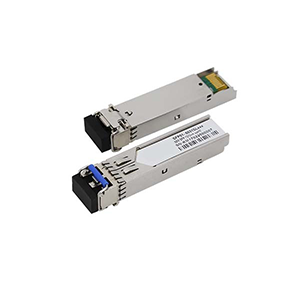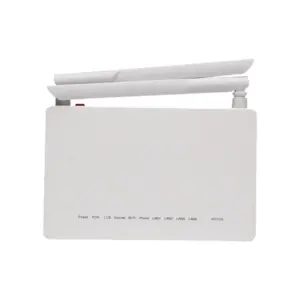MTP connectors undoubtedly play an important role in fiber optic communication networks. This article will explore the characteristics of male and female MTP connectors. We will first define the physical structure and technical standards of MTP connectors and explain their role in high-density fiber optic networks. Next, we will describe the appearance and internal structure of MTP male connectors and analyze their advantages in practical applications.
We will introduce the physical characteristics and connection methods of MTP female connectors and explain how they are different from male connectors. In addition, we will compare MTP male and female connectors in terms of connectivity and ease of use, and analyze the key factors to consider when choosing. Finally, we will give examples of the combined use of MTP male and female connectors in actual network deployment and introduce the application advantages of MTP connection solutions in different scenarios.

Overview of MTP Connectors
Let me introduce you to the basic concepts of MTP connectors in detail.
MTP connector physical structure and technical standards:
1. Physical structure:
- MTP connector is a high-density multi-core fiber connector.
- Its appearance is similar to SC and LC connectors, but it can connect multiple optical fibers at the same time.
- MTP connectors usually contain 4, 8, 12 or 24 optical fiber cores to achieve multi-channel parallel transmission.
2. Technical standards:
- MTP connectors follow the FOCIS-5 standard of TIA/EIA-604-5.
- Its optical and mechanical performance indicators have clear specifications.
- Compared with single-fiber SC connectors, MTP connectors have higher density and reliability.
The role of MTP connectors in high-density fiber networks:
1. Improve wiring density:
- MTP connectors can realize centralized connection of multiple optical fibers.
- Compared with single-fiber connectors, the space occupied by optical fiber wiring is greatly reduced.
- In high-density optical fiber systems, space utilization efficiency can be significantly improved.
2. Simplify fiber management:
- The multi-channel design of MTP connectors reduces the number of connections for a single optical fiber.
- It is conducive to simplifying the deployment and maintenance of optical fibers and improving network management efficiency.
3. Support high-speed transmission:
- The multi-core design of MTP connectors can realize parallel transmission of optical fibers.
- While meeting high bandwidth requirements, it can also improve the reliability of data transmission.
- Suitable for use in high-speed network environments such as data centers and telecommunications backbone networks.
4. Improve system scalability:
- MTP connectors can realize modularization and standardization of fiber channels.
- It is convenient to flexibly expand network capacity and bandwidth according to business needs.
- It provides convenience for future network upgrades and renovations.
In short, MTP connectors play a key role in large-capacity, high-speed fiber networks with their advantages of high density, simplified management, and high-speed transmission, and are an important part of building an efficient fiber system.
Features of MTP male connectors
Let me introduce you in detail the characteristics of MTP male connectors and their advantages in practical applications.
Appearance and internal structure of MTP male connector:
1. Appearance features:
- The appearance of MTP male connector is similar to SC or LC fiber connector.
- However, its external dimensions are larger to meet the connection requirements of multi-core optical fibers.
- The shell material is generally metal or high-strength plastic, providing good mechanical protection.
2. Internal structure:
- The MTP male connector integrates multiple optical fiber cores, usually 4, 8, 12 or 24.
- Each optical fiber core has an independent optical interface and positioning pin.
- A precise optical alignment mechanism is used internally to ensure the optical path transmission performance.
Advantages of MTP male connector in practical application:
1. High-density wiring:
- MTP male connector can integrate multiple optical fibers in a limited space.
- Greatly reduces the occupied area of ??optical fiber wiring and improves the integration of equipment.
- Suitable for scenarios with high requirements for space utilization such as data centers and telecommunications centers.
2. Simplified fiber management:
- MTP male connector realizes centralized connection of multiple optical fibers.
- Compared with single-fiber connectors, the number of optical fiber connectors is greatly reduced.
- It is conducive to simplifying optical fiber deployment and maintenance and improving network management efficiency.
3. High-speed transmission performance:
- The multi-core design of the MTP male connector supports parallel transmission of optical fibers.
- It can meet the bandwidth requirements of high-speed Ethernet such as 10/40/100GbE.
- While ensuring high-speed transmission, it also improves the reliability of data transmission.
4. Easy to expand and upgrade:
- MTP male connector has good modularization and standardization characteristics.
- It is convenient to flexibly increase the number of optical fibers and bandwidth according to business needs.
- It provides convenience for future network upgrades and renovations.
In short, the MTP male connector plays an important role in application scenarios such as data centers and telecommunications networks with its outstanding advantages of high density, simple management and high-performance transmission. It is a key component for building efficient optical fiber systems.
Features of MTP female connectors
Let me introduce the features of MTP female connectors in detail and compare them with MTP male connectors.
Physical characteristics and connection methods of MTP female connectors:
1. Physical characteristics:
- The appearance of MTP female connectors is similar to that of male connectors, and both are used for multi-core fiber connection.
- However, the female connector adopts a slot-type design, which can be connected with the positioning pins of the male connector.
- The female connector usually integrates 4, 8, 12 or 24 fiber signal channels.
2. Connection method:
- MTP female connector adopts a “plug-in” connection method, which can be quickly connected with MTP male connector.
- Accurate alignment between the female and male connectors is achieved through positioning pins and fixing buckles.
- The connection process is simple and fast, which is conducive to rapid deployment and maintenance on site.
Differences between MTP female connector and male connector:
1. Connection role:
- MTP male connector is used at the end of the optical fiber cable and is the active connection end.
- MTP female connector is located on the network device or optical fiber panel as the passive connection end.
2. Installation method:
- MTP male connector is usually directly integrated into the optical fiber cable and deployed with the cable.
- MTP female connector needs to be fixedly installed on the port of the network device or optical fiber panel.
3. Applicable scenarios:
- MTP male connectors are mostly used to connect optical fiber cables, such as jumpers, pigtails, etc.
- MTP female connectors are more suitable for installation on ports of optical fiber distribution frames, switches and other equipment.
4. Easy maintenance:
- MTP female connector’s plug-in connection method is more conducive to on-site maintenance than male connectors.
- When replacement or rewiring is required, the female connector can be quickly unplugged for operation.
In short, although MTP female connectors and male connectors look similar, there are certain differences in connection roles, installation methods and easy maintenance. In practical applications, the two work together to build an efficient multi-core optical fiber network.
Comparison of the differences between MTP male and MTP female
Let me compare the differences between MTP male and MTP female for you, and analyze the key factors to consider when choosing.
Comparison of the differences between MTP male and MTP female:
1. Connectivity:
- As the active connection end, the MTP male needs to be connected with the MTP female.
- As the passive connection end, the MTP female can quickly plug and unplug the MTP male.
2. Ease of use:
- The plug-in connection of the MTP female is more convenient, which is conducive to rapid deployment and maintenance on site.
- The MTP male is relatively bulky and requires careful alignment to complete the connection.
3. Applicable scenarios:
- MTP male connector is more suitable for integration on optical fiber cables to connect different devices.
- MTP female connector is more suitable for installation on the ports of network equipment or patch panels.
4. Reliability:
- The optical fiber core alignment and fixation of MTP male connector are relatively complex, and the reliability is slightly lower than that of female connector.
- MTP female connector provides a more stable connection through fixed installation and plug-in design.
Key factors to consider when choosing MTP male connector or female connector:
1. Application scenarios:
- Choose the appropriate male connector or female connector according to the specific deployment environment of the optical fiber network.
- When flexible wiring is required on site, MTP female connectors are preferred.
2. Connection requirements:
- Evaluate whether the connection needs to be frequently disassembled and assembled. If so, MTP female connectors should be preferred.
- If the connection is relatively fixed, MTP male connectors may be more suitable.
3. Reliability requirements:
- For critical networks with higher reliability requirements, MTP female connectors are more suitable.
- For non-critical networks, MTP male connectors can also meet the requirements.
4. Maintenance convenience:
- If the optical fiber network needs to be frequently maintained, the plug-in design of MTP female connectors is more advantageous.
- Choosing an MTP female connector is beneficial to improving maintenance efficiency and shortening fault response time.
In short, when choosing an MTP male connector or a female connector, you need to balance multiple factors such as application scenarios, connection requirements, reliability, and maintenance convenience to find the most suitable solution.
Matching use of MTP connectors in network applications
Let me introduce you in detail the combined application of MTP male and female connectors in actual network deployment, as well as the application advantages in different scenarios.
Matching application of MTP male and female connectors in network deployment:
1. Connection between optical fiber cable and device port:
- One end of the optical fiber cable integrates an MTP male connector, and the other end is connected to the MTP female port of the device.
- Through the precise docking of the male and female connectors, seamless transmission of optical fiber signals is achieved.
2. Integrated application of fiber optic patch panels:
- Each fiber port of the fiber optic patch panel adopts the MTP female design.
- One end of the fiber optic cable uses the MTP male connector to connect with the female connector on the patch panel.
- Centralized management and fast wiring of optical fibers are realized.
3.Flexible use of jumpers and pigtails:
- Short-distance fiber jumpers and pigtails use MTP male connectors at both ends.
- Can be quickly connected to the MTP female connector port of the device or the patch panel.
- Enhanced the flexibility and adaptability of the fiber optic network.
The application advantages of MTP connection solutions in different scenarios:
1. Data center application:
- MTP connection solutions can greatly improve the density and management efficiency of optical fiber wiring.
- AdvantagesTo meet the network requirements of high bandwidth and high reliability in data centers.
2. Telecom backbone network:
- MTP male and female connectors can realize the rapid deployment and maintenance of optical fiber backbone network.
- It improves the convenience of network upgrade and transformation and enhances the responsiveness of operators.
3. Enterprise/campus LAN:
- MTP connection solution simplifies the complexity of LAN optical fiber wiring and maintenance.
- It meets the needs of enterprises and campuses for flexible and efficient optical fiber networks.
In short, the coordinated application of MTP male and female connectors provides strong support for the deployment, management and upgrade of optical fiber networks. Whether it is a data center, a telecommunications network or an enterprise campus LAN, the MTP connection solution can play its unique advantages and help build an efficient and reliable optical fiber network system.
Summary
Rational selection and correct deployment of MTP connectors are essential for building high-density fiber optic networks. Our company has long focused on the research and development and application of optical communication technology and has rich industry experience. Our MTP series products have reached the industry-leading level in optical performance and reliability, and can meet your demanding network needs.
Whether you need to deploy in a data center or a wide area network environment, we can provide you with customized MTP connection solutions. At the same time, our professional team will provide you with a full range of technical support, including on-site surveys, solution design, and installation and commissioning guidance. Contact us now to learn more about MTP connectors.
MTP Connector FAQ
The MTP connector is a high-density, multi-fiber optical connector used for interconnecting multiple optical fibers in a single connection.
The MTP connector can be either male or female, depending on the arrangement of the optical fiber tips.
An MTP male connector has the optical fiber tips protruding outwards, while an MTP female connector has the fiber tips recessed inwards.
The male and female MTP connectors are designed to mate with each other, allowing the proper alignment and connection of the optical fibers.
No, MTP male connectors cannot be directly mated together. They require an MTP female connector in between to act as an adapter.
MTP connectors are widely used in high-density fiber optic cable assemblies, patch panels, and network equipment interconnections.
Proper keying and alignment features on the connectors help ensure the optical fibers are correctly positioned during the connection process.
When properly mated, there should be no significant performance differences, as the optical interface is the same.
Advancements include higher fiber count versions (e.g., 12, 16, 24 fibers), smaller form factors, and the integration of MTP connectors with other fiber optic components.
Careful cleaning of the fiber tips and connector ferrules, as well as proper handling, is essential for maintaining reliable MTP connector performance.





